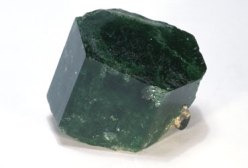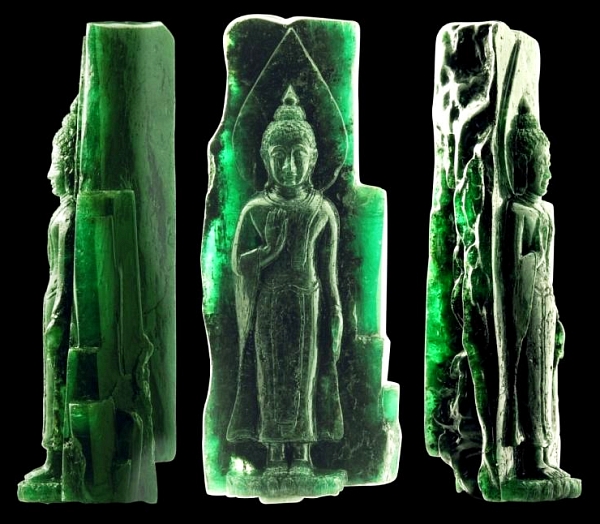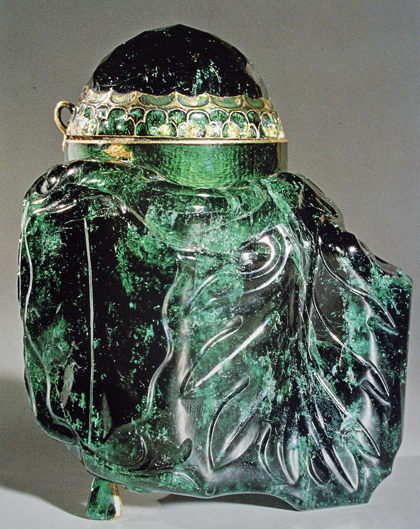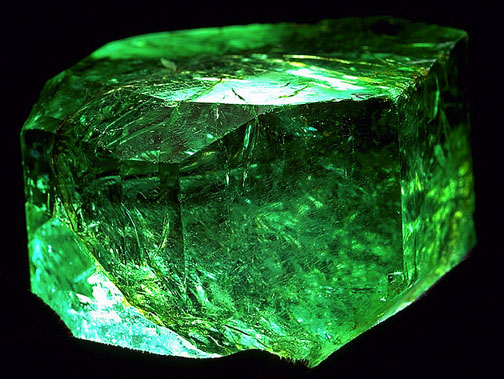One of the world’s most famous uncut emeralds, the Duke of Devonshire Emerald measures 5 cm across the pinacoid and is about 5 cm high. Weighing 1,383.93 carats, this outstanding rough was discovered in the mine at Muzo, Santa Fe de Bogota, Columbia, probably in the early 19th century. One version of its origins states it derived its name the 6th Duke of Devonshire, William Cavendish, who was said to receive or to buy the emerald from Emperor Pedro I of Brazil in 1831.
 Image credit: Natural History Museum
Image credit: Natural History Museum
The Duke of Devonshire Emerald is a terminated hexagonal-shaped crystal. It carries an exceptional deep-green color. What makes it exceptional is its one large area of perfect transparency on the emerald. However, it is heavily flawed in other areas. At its base, there remains a small piece of the original limestone it grew in.
Reputed as one of the world’s largest and finest uncut emerald, this magnificent gemstone was displayed at the Great Exhibition in London in 1851. It now resides in the Vault at London’s Natural History Museum. To coincide with the opening of the Vault in 2007, the Duke of Devonshire Emerald joined The Star of South Africa, also known as the Dudley Diamond, a Padparadscha Sapphire and many other rare collectible gemstones.


